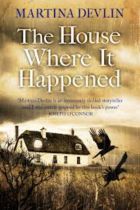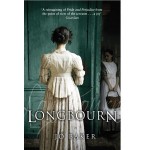 I enjoy historical fiction and I was intrigued by the blurb on The House Where It Happened by Martina Devlin. It is set in 1711 amongst an Ulster Scots community in the remote eastern corner of Ireland. The unnrest, death and murder that occurred half a century earlier still seems to be uppermost in most people’s minds. A belief in ghosts and witchcraft along with strange happenings put people on edge. A pretty young visitor to Knowehead house accuses one woman after another of witchcraft until eight women have been charged.
I enjoy historical fiction and I was intrigued by the blurb on The House Where It Happened by Martina Devlin. It is set in 1711 amongst an Ulster Scots community in the remote eastern corner of Ireland. The unnrest, death and murder that occurred half a century earlier still seems to be uppermost in most people’s minds. A belief in ghosts and witchcraft along with strange happenings put people on edge. A pretty young visitor to Knowehead house accuses one woman after another of witchcraft until eight women have been charged.
This book gripped me to the extent that I had disturbed dreams for two nights after reading it. Knowing this was based on a true story makes it all the more chilling.
Told from the perspective of the serving girl, Ellen, means that the reader has an insight into the working class thoughts and perceptions as well as her reflections on her employers and others in positions of power. ?The voice of working people is largely hidden in our history which makes the novel doubly interesting in my opinion. The novel has a feeling of ‘there but for the grace of God go I’ about it as Ellen reflected on how some of the charges against the ‘witches’ could be levied against any of them. ?The charges, the proof and the testing of the witches seems designed to provide some members of society with satisfaction. It certainly reflects that society used witchcraft, superstition and religion to silence strong or ‘nagging’ women and the sexual double standards was apparent. The narration was interesting, if Ellen isn’t at a particular scene then she hears the details from another character. I did wonder if the tension would have increased if the narrator was one of the women charged with witchcraft but then perhaps the sketchy insights into their experience emphasised their silencing by society. It would also have been interesting to be able to hear more from the perspective of Mary Dunbar, the young woman who accused the women of witchcraft and seemed to be enjoying the attention until she realised she had gone too far.
It was also interesting to see the working life of a serving maid, a theme that is becoming more popular in contemporary fiction. I’m just thinking of the popularity of Longbourn which tells the story of Pride and Prejudice from a maid’s perspective. In this case, a large house filled with family members has a mere two servants and one farm worker, rushes cover the floors, mice and spiders are rampant, and this is luxury compared to most living standards – even just the description of the living conditions makes me glad to be living in the 21st century. There is evidence of kindness in the book – a neighbouring gentleman provides the accused women with hot meals when they are waiting for trial yet despite his protests, he is powerless to help their case.
What I particularly liked about this book too was the use of dialect. All too often, characters in historical novel speak modern and perfect English! The dialect also serves to emphasise the difference between the classes too. It isn’t so strong as to be difficult to understand ?but a glossary is provided at the back of the novel just in case.
I’d really recommend this book – let me know if you have disturbing dreams after it though!









Tara Sparling
Sounds great, Lorna. I’ll definitely give this one a go, having read your review. I love historical fiction anyway, but I am a total sucker for the servant’s point of view. This is one trend which has me firmly in its clutches!
Lorna
I think it’s a definite trend for 2015 ie the servants point of view. It is the kind of book that sucks you in though, you’re transported to that era. Let me know what you think – would love to hear.